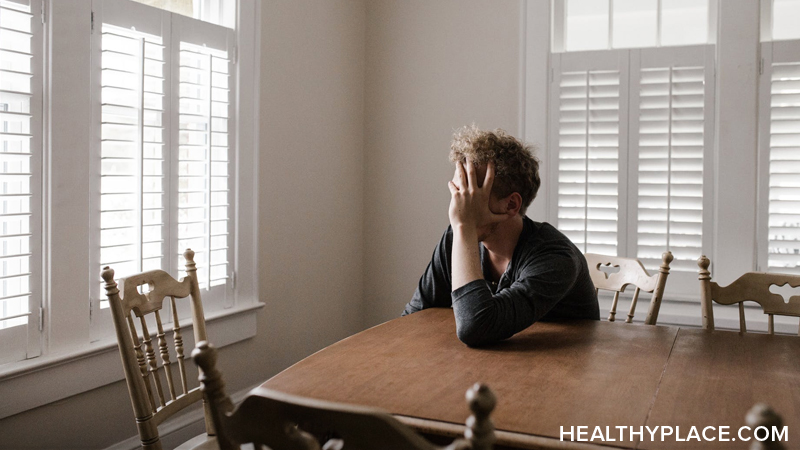What Is a Depression Journal and Why Should You Keep One?

A depression journal is a personal tool for treatment and recovery from this often-debilitating mental illness. Depression journals are trusted companions during your dark days, and they’re not mere passive sidekicks. They help you harness the healing power inside of you to gradually work your way through. People who use depression journals reap many benefits. Here, learn how you can benefit from journaling through depression plus tips on how to do it.
Depression Journals Can Relieve Depression
Numerous studies show that depression journaling is very helpful in many ways (Ackerman, 2019). One study by Katherine Krpan and colleagues (2013) asked people diagnosed with major depressive disorder to journal about their thoughts and feelings related to an emotional situation. They measured their symptoms before and after the experiment using the Beck Depression Inventory and the Patient Health Questionnaire-9 and discovered that their symptoms improved markedly (a control group who journaled about neutral daily events did not see a change in symptoms). Amazingly, it didn’t take long for people to find improvement; they journaled just 20 minutes per day for a total of three days.
Depression journaling is journaling with a purpose, and it is indeed a useful treatment tool. Not only can it reduce symptoms of depression, keeping a journal can help you improve the overall quality of your life. It does this by offering a wide variety of life-changing benefits.
The Many Benefits of Keeping a Depression Journal
Depression journals clear your mind of the clutter of negative thoughts and emotions. In so doing, they boost your mood, self-confidence, and motivation. As you write about various experiences with depression, you get things out of your head and out in front of you. This helps reduce the tendency to ruminate over negativity that is very typical in depression. The experience of clearing your head is stress-relieving, which in and of itself helps your mood and outlook.
As you clear your mind, you gain new perspectives and uncover helpful thought and behavior patterns. Depression journaling allows you to gain some distance between yourself and your negative thoughts and beliefs. As you put them to paper, you begin to see your depression as something apart from you, not who you are but something you’re experiencing. This, in turn, helps you identify specific negative thoughts and beliefs that are often hidden amongst the noise and clutter of all your depression symptoms. As you make these known, you can see and conceptualize problems as well as positives. You begin to know what to change and what to do more of to reduce the negative and enhance the positive.
As you write regularly in your journal, something almost magical begins to happen. You begin to find your voice. You learn what you want and what you don’t want, and expressing it in writing helps you know how to express it verbally. Including positive self-talk begins to replace the harsh, negative self-talk of depression. the act of journaling is also one of self-care. By doing it, you send a message to yourself that you are worth the time and the effort and the positive self-talk becomes self-confidence and self-efficacy (the belief in yourself and the knowledge that you can conquer depression).
Depression journals are valuable for your mental health and wellbeing, but when you are in the throes of depression, the idea of keeping one can seem daunting. How do you begin, and how do you continue? The following tips can help you.
How to Keep a Depression Journal
While there, of course, are no hard and fast rules, no right and wrong, (your journal is personal and you can create it and use it in any way that is meaningful to you), there are certain tips that can make the experience positive and undaunting. Try any or all of these:
- Write regularly (20 minutes daily is recommended but not necessary)
- Try different styles (free-writing, bullets, depression journal prompts, letters to yourself or others, etc.)
- Create a special space, free from distractions and pleasant to be in
- Give yourself time to quietly reflect after you write
- Keep it private so you’re not blocked by the idea of others reading what you write
- Let go of the need to make it perfect (let it be flawed, messy, and stress-free)
- Don’t dwell constantly on the negative (address the negative, but set a limit on how much time you’ll spend addressing what’s wrong and then switch to positives, gratitudes, goals, and plans)
Depression journals help you form a new, kinder relationship with yourself that empowers you to take back the control over your life that the illness stole from you. Natalie Goldberg, Zen practitioner, author, and painter captures the essence of depression journaling. “What’s important is that you’re having a relationship with your mind."
APA Reference
Peterson, T.
(2022, January 4). What Is a Depression Journal and Why Should You Keep One?, HealthyPlace. Retrieved
on 2025, November 8 from https://www.healthyplace.com/self-help/depression/what-is-a-depression-journal-and-why-should-you-keep-one








